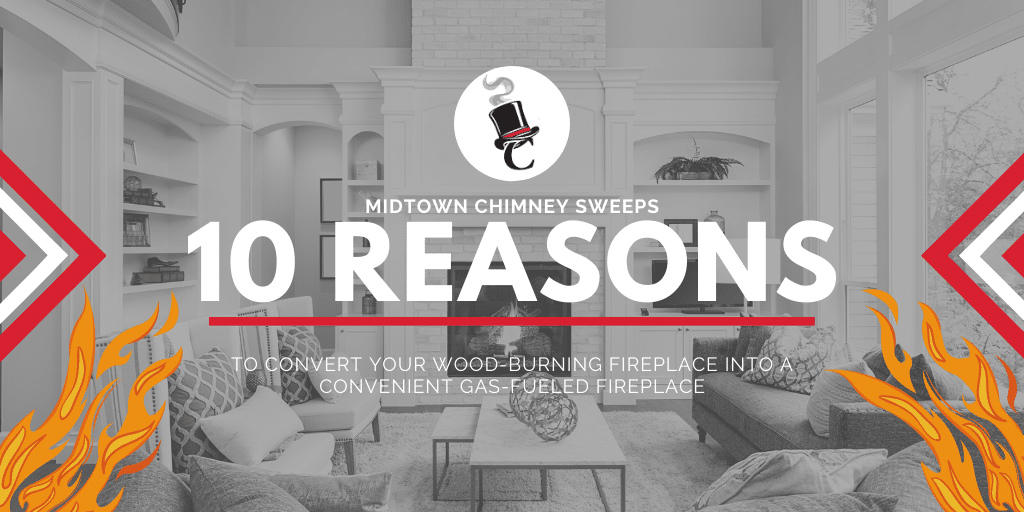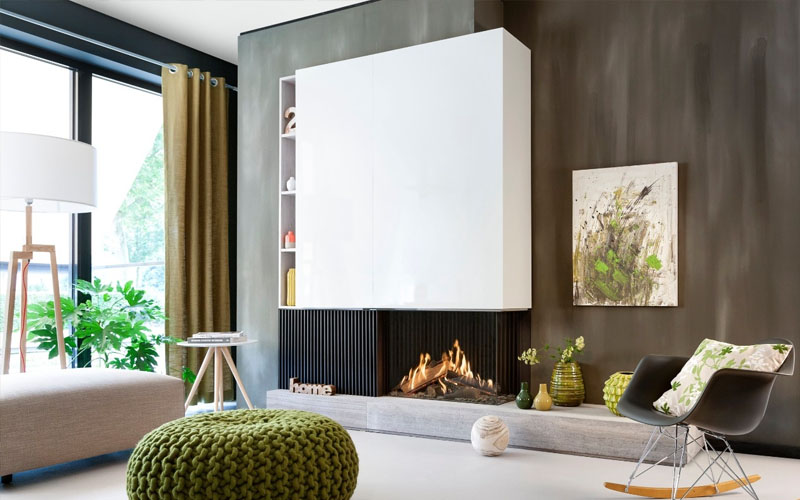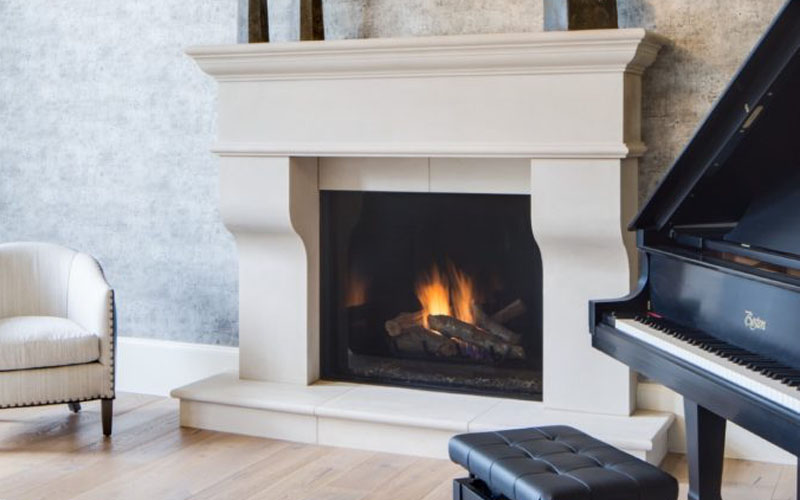
There are a lot of things to love about your wood-burning fireplace, but it may be time for a more convenient option. Worrying about wood, accidentally setting your house on fire, the safety of your family, these are all legitimate concerns when you use your existing fireplace. A gas fireplace offers several benefits that make life easier and safer for you and your loved ones, while still offering the ambiance and warmth you’ve become accustomed to.
Ease of Use
Storing wood logs can be a huge inconvenience, especially if you don’t have a lot of outdoor space. You have to identify a reliable supply, keep the wood dry, and worry about having a pile of flammable logs inside your home. There is also all the time you spend preparing for a wood fire. But imagine having a similar result just by pushing a button. Some gas-fueled fireplaces come with a remote control so you don’t have to get up from under your cozy blanket. This feature is particularly beneficial for people who have difficulty standing or walking.
A Cleaner Chimney
When you choose a gas fireplace install, you get the immediate benefit of stopping the creosote build-up in your chimney. Creosote is creating from burning wood, and when there is enough buildup of this mixture of tar and soot it is basically coating your chimney with fuel. Gas fireplaces burn much cleaner and do not create the same level of harmful buildup. You must still maintain your chimney once you install your new fireplace, but cleaning it becomes a much simpler process, and the overall safety level of your family improves.
Cost
The cost of a gas fireplace install is easily recouped down the road by other savings. If you use your gas fireplace as a source of heat, you can save on your other heating bills, particularly if you can control your heat by zones and shut down the heat in the room with your new fireplace. You also eliminate the cost of logs, which can become very expensive in the winter months in areas that don’t have a large supply to meet the increase in demand. The cost of cleaning your chimney also goes down, as you no longer have to worry about the buildup that results from wood fires.
Helping the Environment
A gas-burning fireplace burns much cleaner than its wood-burning counterparts. Burning wood released carbon dioxide into the environment, and potentially into your home. Gas fireplaces do not have the same emissions problems as wood-burning fireplaces, providing cleaner air to not only the outside of your home but also the inside. The demand for wood goes down when people convert their fireplaces, so you may just be saving a tree by making the switch.
Ease of Cleaning and Maintenance
A wood-burning fire is great to look at, but it sure does make a mess. Just bringing the wood into the house can result in having to clean the floors behind you. Then you also have to clean the ashes afterward and pay a professional to make sure that your chimney is properly cleaned and safe. Your life becomes a lot easier when you convert your fireplace to gas-burning and eliminate all the mess. You should still have a professional do regular maintenance checks on your new gas-burning fireplace to ensure it is running as safely and efficiently as possible.
Safety
Wood-burning fires release potentially dangerous carbon dioxide into your home. They also produce sparks that could accidentally lead to a fire in your home. You must also worry each time you build a fire that it is properly extinguished before you and your family leave the house or go to bed. With a new gas fireplace, all you have to do is press a button and the fire is gone.
You are also protecting your family members with asthma or other conditions when you make the switch over to a gas-burning fireplace. Even with screens in place, some level of smoke from wood-burning still enters the room, and this can make it difficult for some people to breathe.
Efficiency
Wood fireplaces send most of their heat up the chimney and not out into the room you are in. Gas fireplaces are much better at converting fuel into heat, ensuring that if you need your fireplace for more than aesthetics you are getting what you paid for. If you need the heat to keep the room warm, consider a gas fireplace with a built-in blower that helps direct the air.
Legal Compliance
The Environmental Protection Agency has strict rules when it comes to emissions from wood-burning fireplaces. Some states and localities also have rules in place regarding when you can use a fireplace or stove that relies on wood burning. If you live in an area prone to fires, there may be Burn Days when you cannot use your wood fireplace at all. Making the switch to a gas-burning fireplace eliminates most of the concerns about keeping in compliance with federal, state, and local regulations. You should make sure to consult with your gas fireplace professional to ensure that your hookup meets all regulatory and safety standards.
Time Savings
Using and maintaining a wood fireplace can take a tremendous amount of time. Gathering or ordering wood, building the fire, maintaining the fire, and cleaning up after the fire are all activities that are taking away from time better spent actually enjoying the ambiance and warmth your fireplace provides. There is also the potential for having to take time off from work or away from your weekend activities while someone comes over to clean your fireplace. With a gas-burning fireplace, settling in for a cozy even is one button push away.
The Overall Look of Your Home
A wood fireplace can get messy, and it doesn’t take long for soot to build upon the mantel and in other areas around the fireplace. After years of use, you may also notice that your other walls are starting to collect soot or have an oily finish as a result of burning wood. A new fireplace that relies on gas for fuel takes care of that problem and gives your home an overall cleaner appearance. You also have several options when it comes to how your new fireplace looks. You can choose from several types of logs, and choose a grate that suits the overall look of the room.
While it is easy to love a wood-burning fireplace, consider the time, cost and maintenance of your current setup and consider making the switch to gas. People who convert no longer have to worry about where they’re going to get wood, where they are going to store that wood, and how long and messy it is going to be to clean up after a wood-burning fire. People with gas fireplaces get cleaner air, cleaner rooms, and the convenience of a beautiful fire at the push of a button. Converting a wood-burning fireplace to gas could even potentially increase the value of your home. If you decide to sell, you are more likely to find buyers who want a fireplace but don’t want all the work and time associated with wood burning.

